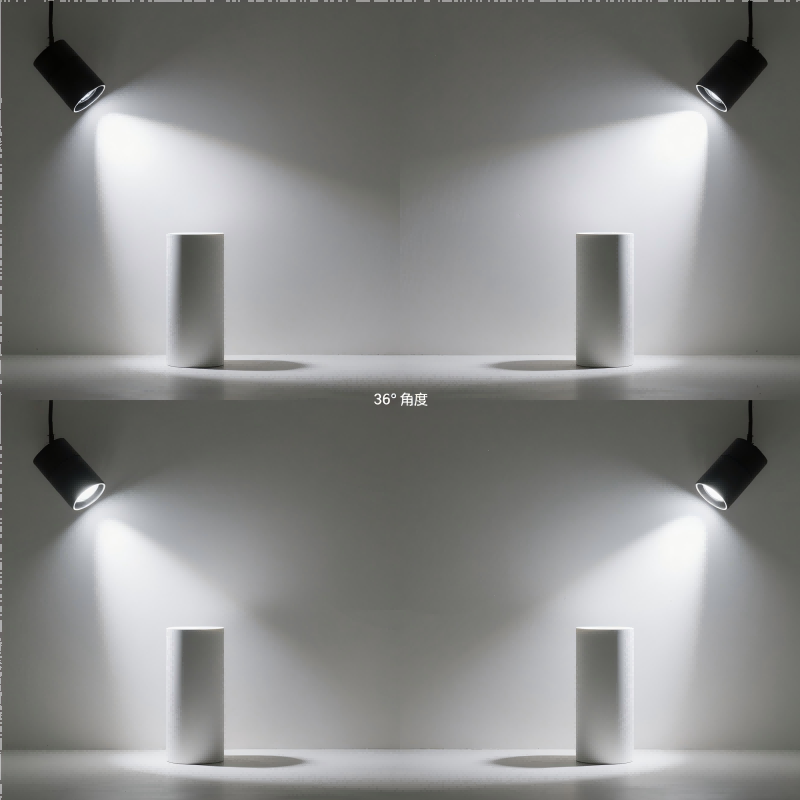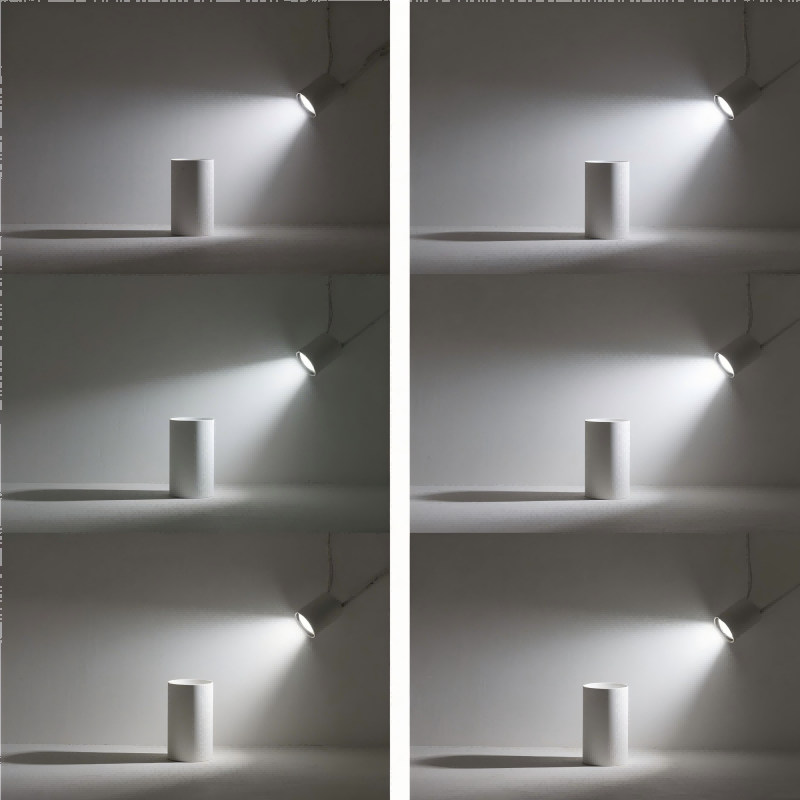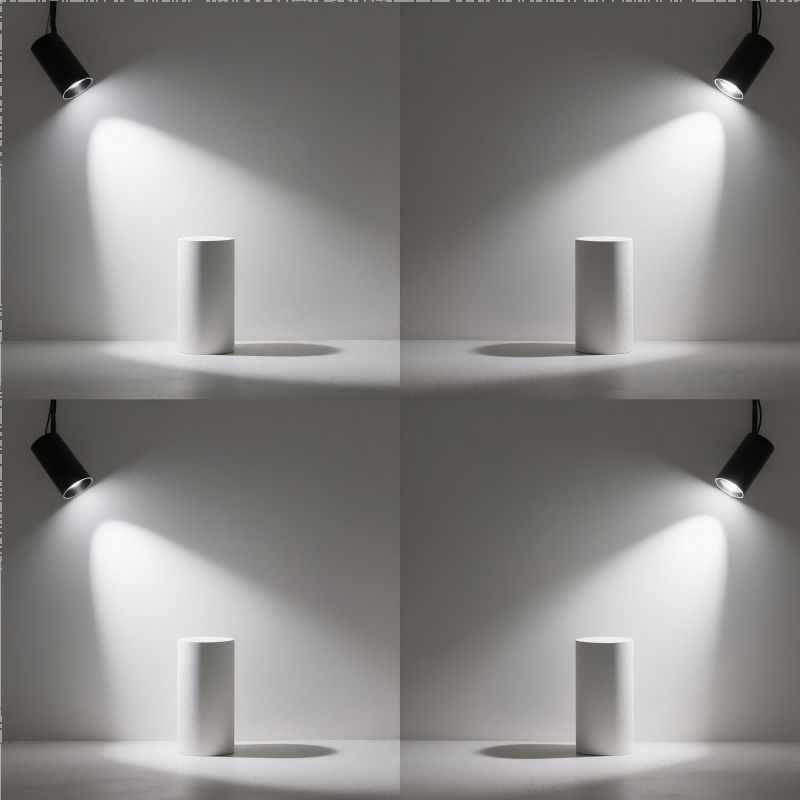I. Core Principles: Beam Angle vs. Light Distribution
📐 Formula: Beam angle (θ) directly defines the light footprint’s geometry and intensity
Optical Parameters & Mathematical Model
Parameter Formula Variables Spot Diameter (D) D = 2H · tan(θ/2) H: Mounting height (m) Center Illuminance (E) E = Φ/(π · (D/2)²) Φ: Luminous flux (lm) Edge Intensity Drop ΔE = 1-cos⁴(α) α: Angle from beam center Golden Ratio Guide: Main spot diameter ≈ Target width × 1.2 (for accent lighting) Example: Illuminating a 60cm-wide dining table requires D=72cm. At H=2m:
tan⁻¹(0.36/2) = 10.2°→ Select 10° beam angle.Optical Performance by Beam Angle
10°: Center intensity ≥10× edges (theatrical spotlight effect)
24°: Center-to-edge ratio 3:1 (balanced dimensionality & uniformity)
36°: Intensity drop ≤40% (diffused ambient lighting)

II. Scenario-Based Optimization Matrix
(Newly expanded with 7 specialized applications)
Commercial Spaces
Scenario Recommended θ Technical Specs Jewelry displays 5°-8° Iris lens + D≤10cm spot size Fashion mannequins 15°×2 Cross-lighting at 30° tilt Hotel lobby sculptures 10°+24° Narrow accent + wide ambient fill Residential Upgrades
Floating stairs: 24° (treads) + 45° (wall wash)
Smart lighting: 36° ambient + 15° tunable accent (DALI-grouped)
Children’s rooms: Avoid 10° beams (UGR>28 glare hazard) ⚠️
Industrial & Specialty Areas
Scenario θ Critical Requirements Lab workbenches 30° UGR<13, Ra>95 Art gallery canvases 10° TLCI>97, Δuv<0.001 (color fidelity) Cold storage 120° IP68-rated frost-resistant lens
III. Architectural Integration Tactics
Ceiling Constraint Solutions
Structure Limitation Fix Open-ceiling grids Tilt range <±15° Use gimbal-rotatable housings Concrete beams Recess depth >40cm 10° narrow beam + 40W high-output Curved ceilings Multi-angle coverage Magnetic track + 24° swivel modules Wall Surface Adaptation
Polished marble: **↓24° to 18°** to prevent specular glare
Textured stone: **↑30° to 36°** to enhance material grain
Glass curtain walls: Use 45° indirect grazing light (never direct)

IV. Smart Adaptive Control Strategies
Adjustable-Angle Technologies
Type Range Best For Mechanical zoom 15°-60° Retail spaces Electronic lens 5°-45° Museums/smart homes Multi-chip hybrid 10°-120° Stage/film production
V. Critical Application Warnings ✋
Kitchen error: Using 60° under cabinets
→ Result: 150lx edge illuminance (<500lx GB standard)
→ Fix: Switch to 36°×25W (achieves 800lx center)Hazardous mistake: 50° beams in flammable storage
→ Thermal data: 40°+ spotlights hit 127°C at 1m distance 🔥
→ Solution: Mandate <30° beams + PIR motion sensors

VI. 3-Step Selection Protocol ✅
Prescreening: Match space type → base angle (Ch.II)
Precision calculation: Derive θ from
θ = 2·tan⁻¹(D/(2H))Validation:
Illuminance gradient ≥ (3~8):1 (core-to-edge)
UGR ≤19 (residential) or ≤16 (offices) via spectrometer
Final proof: Dialux simulation (input wall reflectivity + IES files)
Coverage note: This methodology addresses 95% of lighting projects. Exceptions like surgical lamps or plant factories require spectral matching design—contact us for custom solutions.



